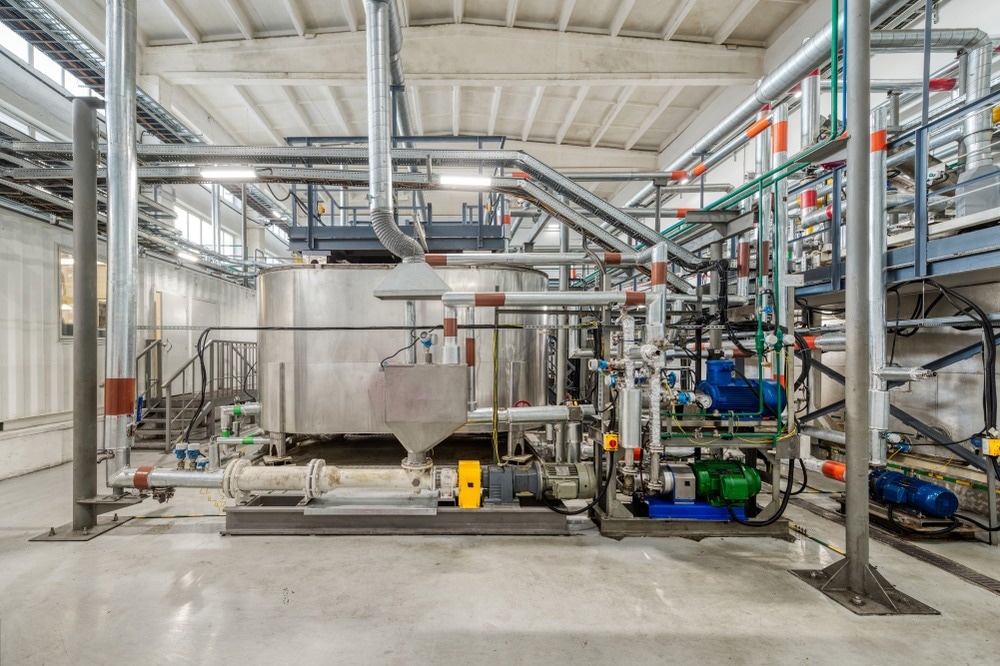In a paper recently published in the journal Advances in Colloid and Interface Science, researchers reviewed and summarized the stability mechanisms applied to emulsion explosives.

Study: Perspectives in the stability of emulsion explosive. Image Credit: Nordroden/Shutterstock.com
Background
Emulsion explosives are important industrial explosives due to their water resistance, remarkable explosion performance, the availability of raw materials, their simple and cost-effective preparation process, safety, and low smoke concentrations.
The preparation of emulsion explosives is a two-step process. Initially, an emulsion explosive matrix is prepared from the emulsion of a supersaturated solution of ammonium nitrate (AN) and oil materials. Following this, the emulsion is tightly wrapped in an oil film. Consequently, emulsion explosives have great water resistance. However, the poor explosion performance of the matrix prevents its explosion by a detonator, and so the matrix requires further sensitization to generate hot spots for detonation.
Furthermore, the stability of emulsion explosives is an important concern as it is impacted by factors such as the matrix’s instability, mismatch of the matrix and the sensitizer, and AN crystallization. Hence, considerable efforts have been made to understand and enhance the stability of emulsion explosives.
Structural Properties and Instability of Emulsion Explosives
Emulsion explosives are highly concentrated water-in-oil (W/O) emulsions wherein the matrix represents the high internal phase W/O emulsion. To initiate the explosion, the matrix needs to be spray dried or sensitized. The structure of the explosive is characterized by two aspects, namely the matrix’s microstructure and the condition of the sensitizer, and can be categorized into packaged, bulk, or powdery emulsion explosive matrices.
Despite the process parameters, formula, and raw materials being different, the microstructures of the matrices are similar. Moreover, the droplets compressed into polyhedrons will result in narrow phase layers among neighboring droplets, increasing the interfacial energy.
Additionally, contacts between droplets differing in sizes can cause Ostwald ripening, where the bigger droplets will grow by receiving molecules from the smaller droplets, while the smaller droplets continuously decrease in size until they disappear. These larger droplets can be ruptured and deformed during movement, destroying the microstructure of the emulsion matrix. However, the effect of polydispersity of the dispersed emulsion droplets on the stability of the matrix is unclear and requires further study.
Furthermore, the high AN content in the dispersed phase is an important factor since AN crystallization is unfavorable for the emulsion explosive’s stability. AN crystallization is evident in stored powdery emulsion explosives. AN crystallization may also be triggered when the oil film is loosely wrapped, allowing the AN crystals to bridge with those in the neighboring droplets, causing a loss in the explosion performance. However, the matrix’s instability may often be caused due to sensitization failure. Thus, the sensitizer type and the sensitization modes are also key considerations in determining the matrix’s stability.
Stability Mechanism
The key parameters to be considered in the preparation of a stable emulsion explosive are interfacial tension, interfacial film strength, and the droplets’ electrical properties. The reduction in the interfacial tension helps in improving the emulsifying efficiency, while a stronger interfacial film can prevent its rupture and damage to the W/O structure. Furthermore, droplet coalescence can be prevented by the charged layer formed by the emulsifier through adsorption of charged ions, thereby providing further stability to the structure.
Stability Improvement Methods
The stability of the emulsion explosives can be improved through the adjustment of the structures and the nature of the raw materials. Bulk emulsion explosives require stability during the pumping process than during storage. Thus, the matrix can be made dynamically stable through a reduction in viscosity.
Packaged emulsion explosives require better long-term storage stability than dynamic stability. This is achievable by enhancing the interfacial film’s strength and moderating the composite wax’s formula and the nature of the emulsifier.
On the other hand, the stability of powdery emulsion explosives is dependent on the evaporation of moisture which is necessary to prevent the destruction of the oil film coating on the AN solution.
Conclusion
To summarize, the researchers reviewed the current studies on emulsion explosives, covering the cause of their instabilities and improvement methods. The factors affecting the stability of the emulsion explosives were assessed considering the matrix microstructures, the nature of the emulsifier, and the dispersed phase, followed by the evaluation of improved methods for respective emulsion explosive categories.
According to the authors, these studies should enable further research and development in understanding the in-depth mechanism of emulsion explosives and therefore contribute to establishing more effective improvement methods.
More from AZoM: What are the Functions of Conductive and Photoconductive AFM?
Disclaimer: The views expressed here are those of the author expressed in their private capacity and do not necessarily represent the views of AZoM.com Limited T/A AZoNetwork the owner and operator of this website. This disclaimer forms part of the Terms and conditions of use of this website.
Source:
Zhang, Kai-ming, Zhao, Hai-rong, Perspectives in the stability of emulsion explosive, Advances in Colloid and Interface Science, Volume 307, 2022, 102745, ISSN 0001-8686, https://www.sciencedirect.com/science/article/pii/S0001868622001476?via%3Dihub